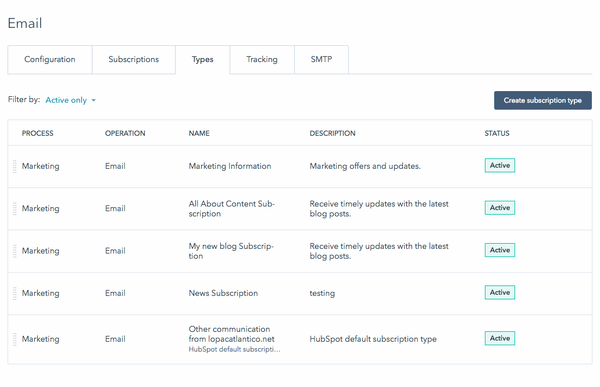It’s Monday morning, and you've just opened up your inbox. Or it’s Monday morning and you just opened HubSpot and navigated to your Email dashboard, ready to start drafting this week's email for your customers.

But one thing starts to cross your mind: What if I end up in Gmail's Promotions tab? Am I sending an email that will be marked as spam?
But Gmail's tabs are not for spam. They're organizational tabs to help you and your customers bucket emails more appropriately for smoother and more organized communications.
So how does this organization fit into your email marketing strategy?
First, let's cover what Gmail's tabs really mean, and then we'll jump into how to optimize your emails to land in that coveted primary inbox.
Understanding Where Your Emails Are Going
According to the Email Client Market Share presented by Litmus, Gmail is the second most used inbox.
This means that when you hit Send on your email, there's a pretty good chance it will end up in someone's Gmail inbox.
And inside Gmail's inbox, there are some very different tabs to pay attention to.
Enter the dreaded word: Promotions tab.

It's a common misunderstanding that the Promotions tab in Gmail is spam. It’s not!
The Promotions tab—just like the Social tab—is part of the inbox.
Each tab is there to help the recipient categorize and organize the emails that are "legitimate." In other words, these emails in the different tabs are not spam. They're different types of emails you receive, and Gmail is helping you keep them organized.
I like to think about it this way: Inside your HubSpot email tool, you have folders you can use to organize the types of emails you're sending. Just like you want to organize the emails you're sending out by the purpose they're serving, Gmail is organizing the emails you're receiving to help you better have control over your inbox.
But there's still a Spam folder in Gmail. Email that's not meeting the correct stands will still end up there, so you want to always be sending the right content to the right audience at the right time, every single time you hit Send.
HubSpot Tips on Sending Great Email
So you know that the inbox is organized, but you still want to make sure you're sending great email to land yourself into someone's primary inbox (if that's where your email is targeted to).
Here are some HubSpot tips for sending great email:
- Use “unengaged contacts.”
- Look at all “types” of emails.
1. Use “unengaged contacts”
Enable graymail suppression in your email settings. Graymail is a term for email that sits unopened in your recipients' inbox. This feature uses the Sends since last engagement contact property to automatically exclude contacts that aren't engaging with your emails so that you can work to improve the deliverability of your emails.
This will help you send the right emails to the people who want to receive them and in turn help the health of your email marketing strategy.
In HubSpot you can enable this feature directly from you email sends. When drafting your email, navigate to the Recipients tab. Select the check mark reading, Don’t Send To Unengaged Contacts. It will provide a total number of contacts that fit the criteria from the list of contacts you've decided to send to.
You can also set a frequency cap, which means you can select the number of emails that a contact can receive either daily, weekly, every two weeks, or monthly.

Sometimes less truly is more, so pay attention to the contacts that should be receiving less email to continually improve the health of your email marketing strategy.
Want to learn more about email deliverability?
Check out this HubSpot Academy Lesson.
2. Look at all “types” of emails
If Gmail is organizing the emails that are coming into your inbox, it’s probably because you're receiving and thus sending different types of emails.
Think about the types of emails you send out for your company. A few types might come to mind:
- Blog emails (daily, weekly, or even instant notifications)
- General marketing emails
- Sales emails (1:1 communication)
- Event emails
- Transactional emails...
The list could go on and on.
When looking at the types of emails you're sending, keep in mind what those types are connected to.
They are connected to your subscription types that your readers are opting in and out of. The more types you have, the more complicated it could be for your readers to understand which types they want to receive. As a result, they could end up opting out of everything.
Manage the types of emails you're sending, and think about how much email is too much for a reader.
In HubSpot you can organize your subscription types from you email settings and set the four components of a type:
- Process
- Operation
- Name
- Description
Each of these components are there to help you understand the value of that subscription type and what the user might receive from it.

Want to learn more about managing subscription types?
Check out this article.
Respect the Inbox
Now you can stop fearing the Promotions tab or any other tab in Gmail. They're simply a means to provide some organization to our busy lives. But regardless of whether you're okay with the tabs or yearning to get your emails into that primary inbox, take some time to clean up your emails, making them reach the right people at the right time. Remember: Sending emails is a privilege, not a right. The user is in control of their inbox. Treat the inbox with respect.










